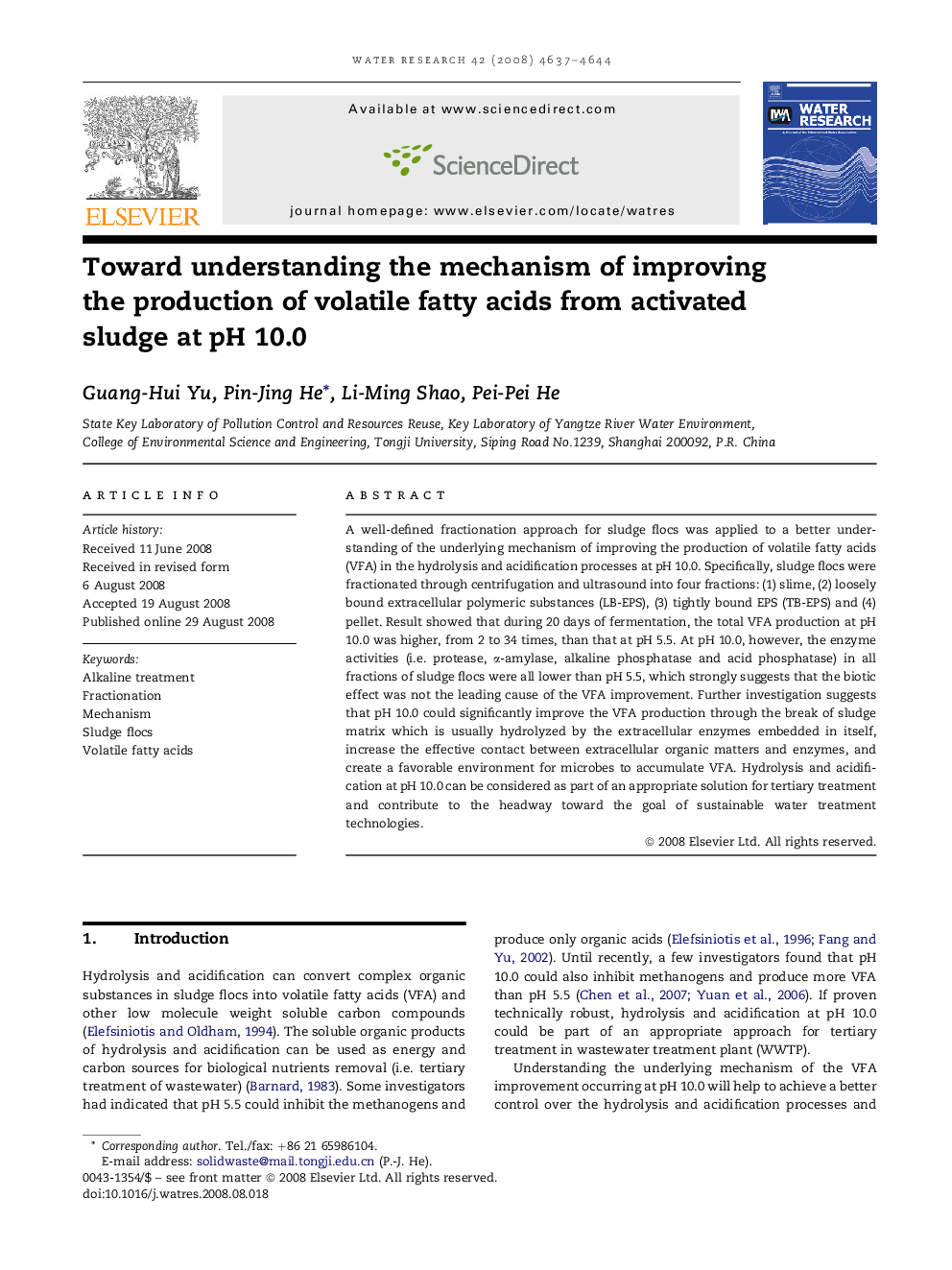| Article ID | Journal | Published Year | Pages | File Type |
|---|---|---|---|---|
| 4483415 | Water Research | 2008 | 8 Pages |
A well-defined fractionation approach for sludge flocs was applied to a better understanding of the underlying mechanism of improving the production of volatile fatty acids (VFA) in the hydrolysis and acidification processes at pH 10.0. Specifically, sludge flocs were fractionated through centrifugation and ultrasound into four fractions: (1) slime, (2) loosely bound extracellular polymeric substances (LB-EPS), (3) tightly bound EPS (TB-EPS) and (4) pellet. Result showed that during 20 days of fermentation, the total VFA production at pH 10.0 was higher, from 2 to 34 times, than that at pH 5.5. At pH 10.0, however, the enzyme activities (i.e. protease, α-amylase, alkaline phosphatase and acid phosphatase) in all fractions of sludge flocs were all lower than pH 5.5, which strongly suggests that the biotic effect was not the leading cause of the VFA improvement. Further investigation suggests that pH 10.0 could significantly improve the VFA production through the break of sludge matrix which is usually hydrolyzed by the extracellular enzymes embedded in itself, increase the effective contact between extracellular organic matters and enzymes, and create a favorable environment for microbes to accumulate VFA. Hydrolysis and acidification at pH 10.0 can be considered as part of an appropriate solution for tertiary treatment and contribute to the headway toward the goal of sustainable water treatment technologies.
